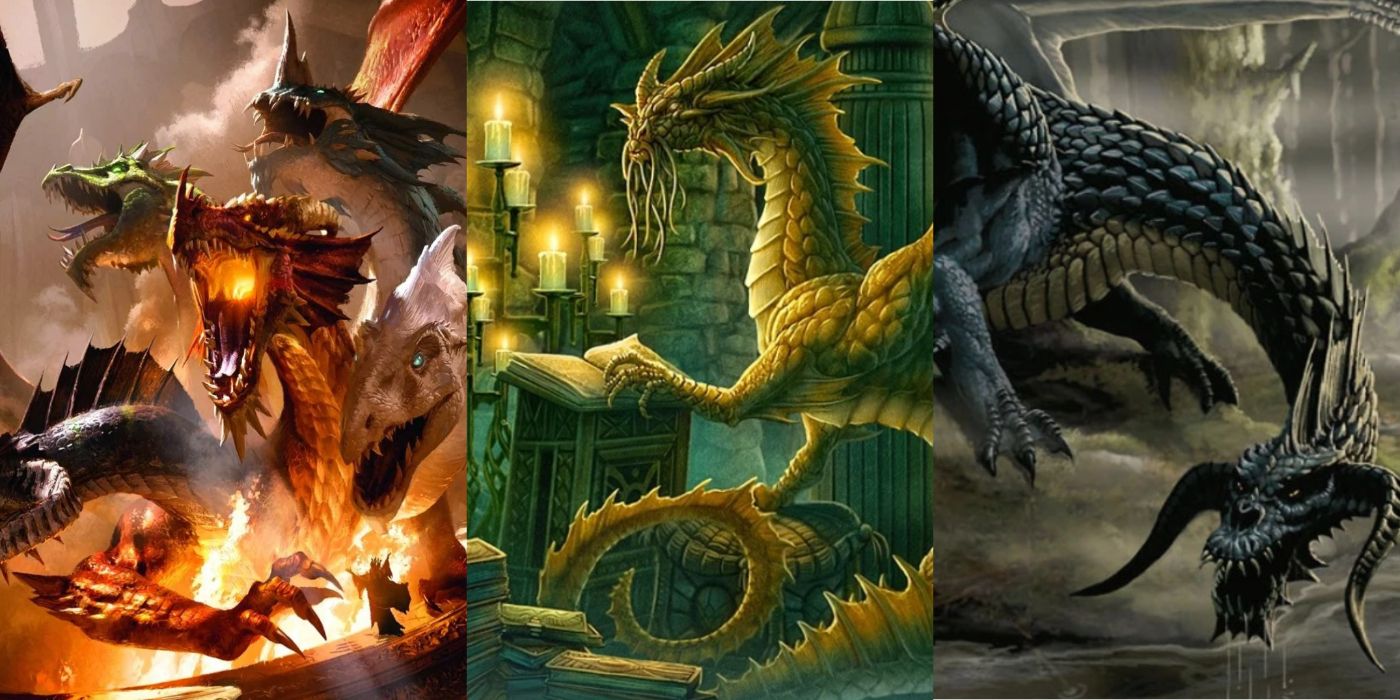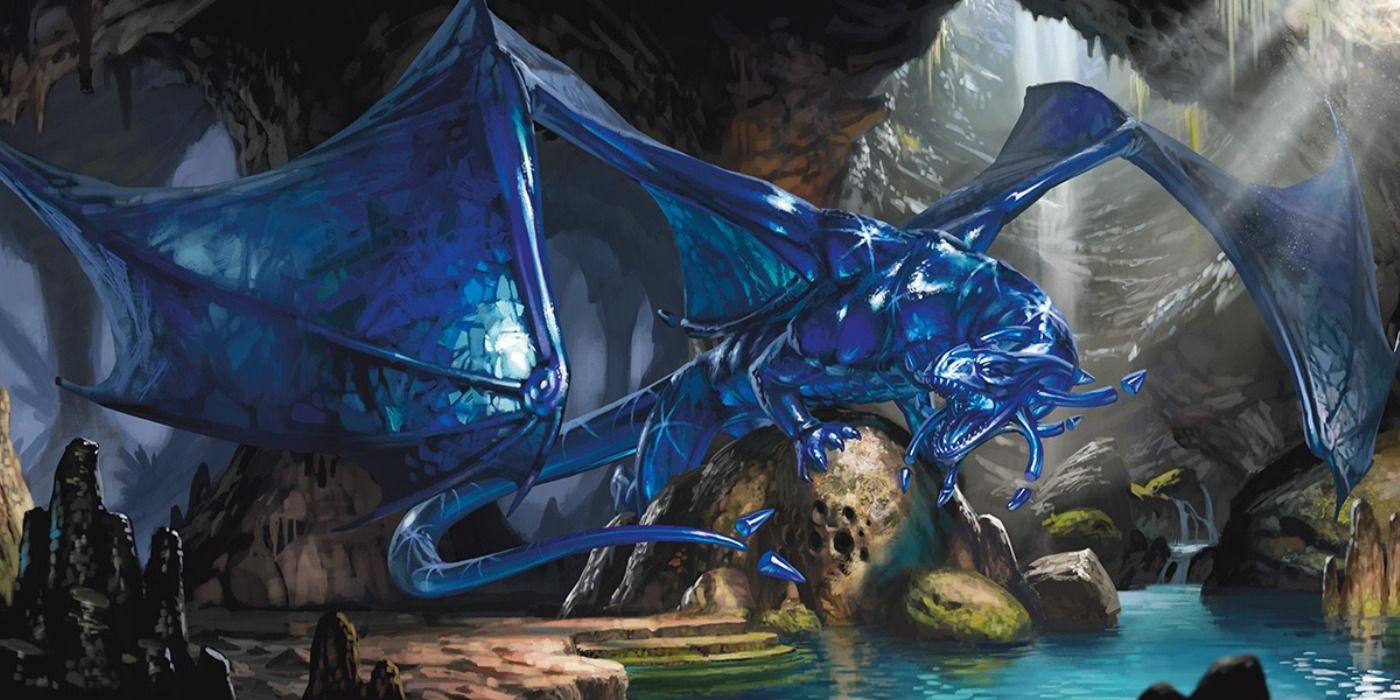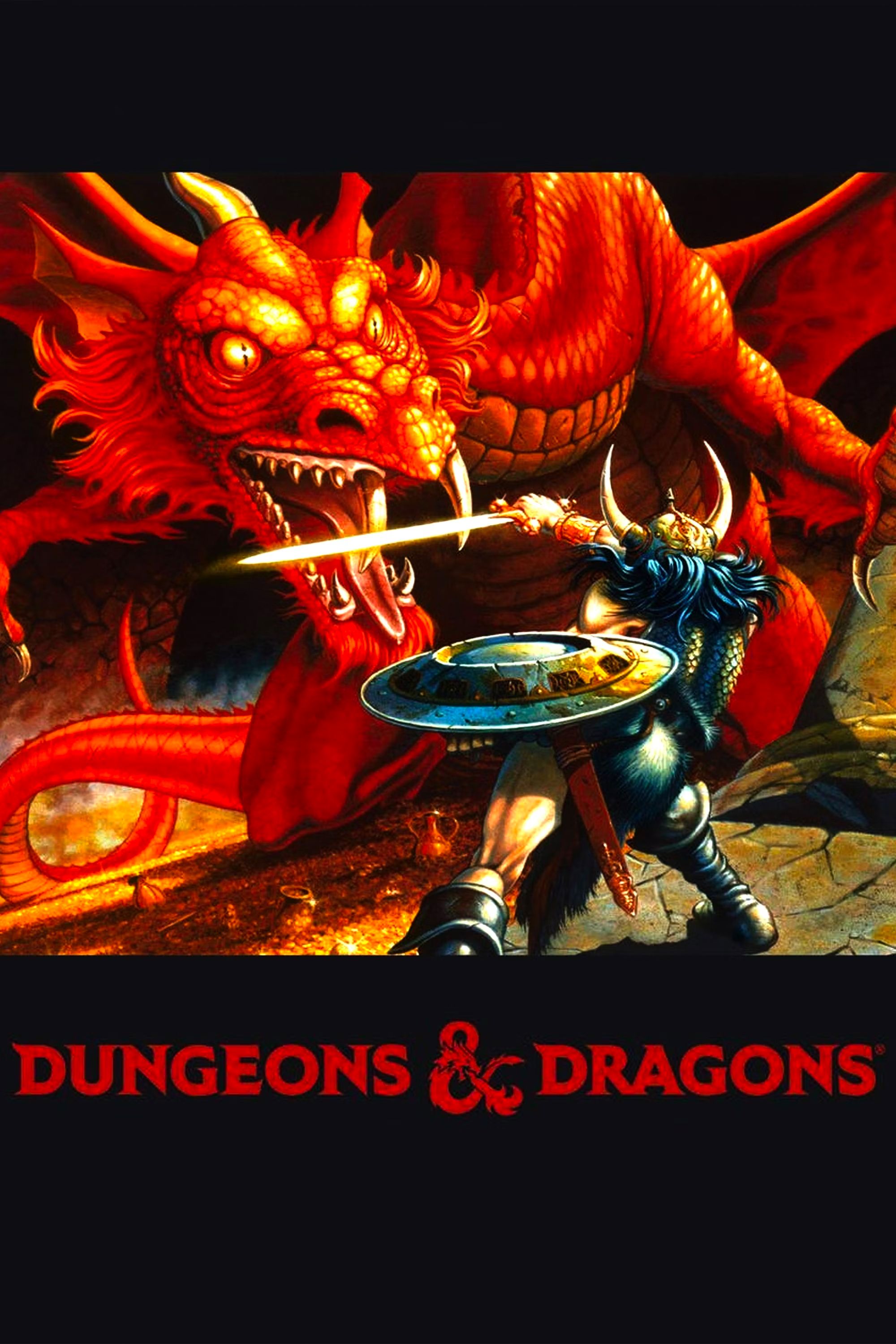As far as fantasy monsters go, dragons are among the most, if not the most, iconic. They show up in some Dungeons & Dragons games as boss monsters or the major antagonists of campaigns, but not as often as one might think given their inclusion in the game’s title. Many official modules from Wizards of the Coast do not include dragons, or if they do, feature them briefly in side quests or one-off interactions.
Dragons got a bit more attention in 2021, when Fizban’s Treasury of Dragons provided details on different types, their personalities and goals, and where they live. Still, there’s little to go off of outside this book, and new DMs may struggle to incorporate dragons into their games in ways that feel impactful and true to the creatures’ strength. The upcoming Dungeon Master’s Guide and Monster Manual will hopefully touch on these important figures a bit, but for now, here are ten tips for DMs looking to include dragons in their campaigns.
10 Consider The Strength Of The Party
Don’t Set Players Up For Failure
There’s a reason dragons are revered and feared within fantasy settings. They are powerful, both within the lore of the Forgotten Realms and according to official dragon stat blocks. Many of these creatures, even those of the lowest challenge rating, have breath weapons that can melt whole parties and enough health and mobility to avoid going down quickly. As such, it is important for DMs to recognize whether their party can handle a dragon at a given point.
Related
D&D: Fizban’s Treasury Of Dragons: New Subclasses Explained
Fizban’s Treasury of Dragons is introducing the Way of the Ascendant Dragon subclass for the Monk and the Drakewarden subclass for the Ranger to D&D.
Throwing low-level characters against a dragon can result in a total party wipe, something nobody wants that will likely leave players confused and upset. A critical rule of DMing is to avoid setting players up for failure, instead challenging them while providing paths to success. One reason dragons rarely appear in official content is because they are suited for high-level encounters, and many 5th edition modules are geared at lower level parties. Don’t introduce a dragon without making it clear how dangerous it is and assessing that it’s right for the campaign.
9 Let Your Players Prepare Themselves
Dragons Are Dangerous – But So Is The Party
Dragons are big threats, but even the most powerful monsters in D&D can be beaten with a good enough plan. This may not work for every party, but many players will jump at the chance to plan out an encounter, preparing spells, potions, and magic items to suit a fight. Dragons have some very well-known strengths, and thus, players can have their characters prepare accordingly.
Not every party will enjoy taking the time to prep for a fight or research an enemy, and players may just want to jump into combat. DMs should learn what their players enjoy doing in the game and lean into it.
That’s not to say that DMs should hand players the tools to take down their foes. Instead, let them work for it. Maybe the party wizard realizes the dragon’s flight will be a problem for their melee-focused fighter and seeks out a scroll of earthbind. If the party learns what kind of dragon they are up against, they could seek out ingredients for potions of resistance against its breath weapon. Turn this preparation into a part of the campaign, letting players go through the work of readying themselves against a tough opponent.
8 The Call to Adventure
Give Your Players A Reason To Face This Threat
Some enemies in D&D can just show up along the road, attacking the party during their travels or robbing them in a city. Dragons usually aren’t going to work like that. They are central creatures, with cunning and caution, and it will often be the players themselves approaching the dragon’s location, taking action rather than reacting. But they probably aren’t going to do this just for the thrill of it, or rather, their characters won’t. They need some reason to fight such a monster, whether it be selfless or self-serving.

Related
D&D’s New Monster Manual Will Have “Over 500 Monsters” In First Look At The Upcoming Rulebook
The 2024 Dungeons & Dragons Monster Manual will be a lot bigger than the 2014 one, and it’s aiming to do more than just throw new foes into the mix.
The ultimate reason for the venture is entirely up to the DM and the players. Maybe the dragon’s presence is a threat to a nearby town of wood elves who are afraid the dragon will burn down the surrounding forest while it is hunting. Maybe there’s a specific item in the dragon’s hoard that the players need to face a larger foe or something that relates to one of their character backgrounds. Whatever it is, it needs to be reason enough for the party to risk life and limb.
7 Build Tension Before The Encounter
Give These Monsters The Weight They Deserve
All the previous points go towards this, but it’s important to build up to a dragon encounter. Although this is true for any boss monster, it’s especially relevant for something as legendary as a dragon. Dropping huge monsters like this into an encounter with little warning can give players a good shock, but it ultimately diminishes the feeling that they are imposing and a force to be reckoned with.
Use the time before the actual fight or dungeon to build up the dragon’s presence. Mention burn marks on the local landscape or smoke rising from a nearby mountain cave. Have traveling NPCs speak about a huge shadow flying overhead, blotting out the sun. This goes not only towards making the dragon itself feel like a real threat, but also towards making the world of a campaign feel interconnected. Dragons are powerful enough that they will inevitably shape their surroundings, both physically and thematically, and showing this to players is important.
6 Think About The World’s Context
Make Dragons Fit Their Surroundings
On a related note, the area around a dragon should match its tone and aesthetic. There are many different types of dragons, from fire-breathing red ones to metallic descendants of Bahamut and even gem dragons with crystals growing between their scales. Match a dragon’s type to their environment; after all, these creatures will naturally seek out a lair that suits them best.
A gem dragon might be comfortable within an abandoned mine, using the tunnels as chutes in and out and burrowing even further to seek out precious stones. An icy white dragon might make their home upon a mountaintop, or perhaps use their freezing breath to turn a village into a tundra fit for habitation. The Fizban’s book talks a bit about this, but dragons tend to have a magical transformative effect on their habitats, and DMs can use this to explain their presence and find a good spot for them to fit in.
5 Prep Your Dragon’s Hoard
Provides The Antagonist With A Goal – & The Party With Incentive
A dragon’s hoard is more than just the treasure a party can claim after dealing with their foe. It is a symbol of a dragon’s interests and what they ultimately seek to gain. Because dragons are typically pretty ambitious, seeking to grow their power and wealth, their hoard will showcase their most treasured possessions obtained while trying to achieve their goals.

Related
10 Coolest Dragons In Dungeons & Dragons
Dragons are the best part of any Dungeons & Dragons campaign, but which are the coolest dragons in the game?
An art-loving dragon may possess magical paintings that act as portals between realms and therefore make their lair somewhere dry to protect their hoard. A bloodthirsty dragon may coat their strongest enemies in molten gold, piling up a hoard of gilded corpses. Be purposeful when choosing additions to a dragon’s hoard, thinking about what it says about the dragon themselves and how its presence will incentivize the party to be victorious.
4 A Leader Or A Lone Wolf?
Decide If Your Dragon Has Followers
Many good bad guys have henchmen, and if DMs want to make their dragons more threatening, there are many good options for them to build up their ranks. Kobolds are the most obvious choice, since many often worship dragons and form groups around serving them. But there are also dragon cults, wyrmlings, and even species like draconians made specifically to serve as draconic shock troops.
Part of building the tension to a dragon fight might be going through the dragon’s defenses, with minions protecting the outer limits of their territory or searching for treasures to add to their master’s hoard. On the other hand, some DMs may wish to emphasize their dragon’s strength or independence by not having them use any minions, operating entirely on their own. The most powerful dragon stat blocks are so loaded that they won’t need any backup to give a high-level party trouble.
3 Showcase A Dragon’s Personality And Intelligence
Dragons Are More Than Mindless Beasts
Part of what makes dragons stand out among other monsters is that they have a certain intelligence to them, which often goes ignored. While some fantasy worlds treat dragons like mindless killing machines or brutal destroyers, the dragons of the Forgotten Realms are smart, with their own personalities, goals, and tactics. Dragons should not just be treated like big beasts in the party’s way; rather, DMs should think about how a dragon will act and speak and consider why they are at odds with the party.
In some cases, they may not be the party’s enemy at all. Dragons are capable of negotiation, reasoning, and mercy, and it may be that the party in a given campaign works with a dragon rather than against it. That all depends on the party, of course, but it’s worth remembering that dragons operate with human-like intelligence in most cases. While they perform monstrous acts, they are rarely mindless.
2 Provide Room To Move
Dragons Need Space, Not A Shoebox
One thing to remember when it comes to an actual fight with a dragon is that the map needs to be big. Dragons are big creatures by design, and they perform best when they have room to maneuver. Their flying speed lets them cover large distances quickly, and using a map with changes in elevation will give them the best chance to show off their strengths.
Not only that, but players will likely appreciate having the extra room, as well. It gives the party space to spread out and avoid getting caught together in a breath weapon attack, or to find an optimal position to fire arrows. Fighting a dragon in an enclosed space will usually lead to a more stale fight, with the creature and players standing still and taking attacks repetitively.
1 Make The Dragon’s Lair Integral To The Fight
The Location Of This Foe Is Important
On the topic of battle maps, the dragon’s lair is an important aspect of who they are and what their fight will be like. It needs to reflect their elemental type and provide ways for them to move about and get an advantage over the players. The lair itself should feel like an enemy in the fight, posing extra challenges for those barging in and daring to threaten the dragon on its home turf.

Related
D&D: How To Use Lairs From Fizban’s In Homebrew Games
Fizban’s Treasury of Dragons has details for the lairs of fifteen types of dragons, and it’s easy for DMs to repurpose them for own campaigns.
There are plenty of ways to make the lair feel important, from the layout of the map and stage hazards to giving the dragon lair actions to use between their turns. This makes the fight more difficult, adding another layer players need to prepare for. If players perform reconnaissance to prep for the terrain, however, an interesting fight rewards them. Finding a way to lure a dragon away from its safe areas and turn its environment against it can make for a truly memorable Dungeons & Dragons encounter.
Sources: Dungeons & Dragons/YouTube, Forgotten Realms History/YouTube, DelverofDungeons/YouTube

Dungeons and Dragons
- Original Release Date
- 1974-00-00
- Publisher
- TSR Inc. , Wizards of the Coast
- Designer
- E. Gary Gygax , Dave Arneson
- Player Count
- 2-7 Players





